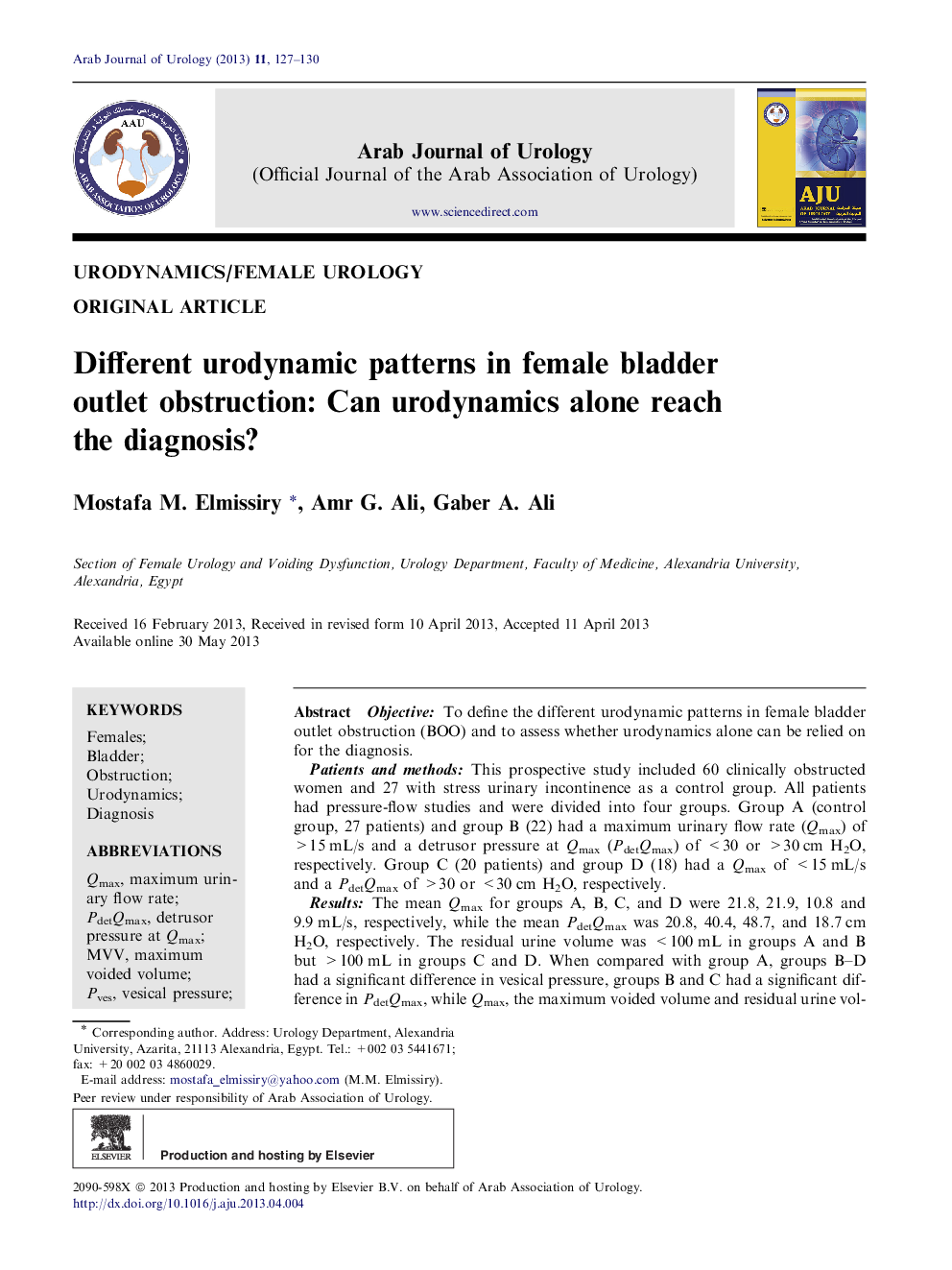| Article ID | Journal | Published Year | Pages | File Type |
|---|---|---|---|---|
| 4268135 | Arab Journal of Urology | 2013 | 4 Pages |
ObjectiveTo define the different urodynamic patterns in female bladder outlet obstruction (BOO) and to assess whether urodynamics alone can be relied on for the diagnosis.Patients and methodsThis prospective study included 60 clinically obstructed women and 27 with stress urinary incontinence as a control group. All patients had pressure-flow studies and were divided into four groups. Group A (control group, 27 patients) and group B (22) had a maximum urinary flow rate (Qmax) of >15 mL/s and a detrusor pressure at Qmax (PdetQmax) of <30 or >30 cm H2O, respectively. Group C (20 patients) and group D (18) had a Qmax of <15 mL/s and a PdetQmax of >30 or <30 cm H2O, respectively.ResultsThe mean Qmax for groups A, B, C, and D were 21.8, 21.9, 10.8 and 9.9 mL/s, respectively, while the mean PdetQmax was 20.8, 40.4, 48.7, and 18.7 cm H2O, respectively. The residual urine volume was <100 mL in groups A and B but >100 mL in groups C and D. When compared with group A, groups B–D had a significant difference in vesical pressure, groups B and C had a significant difference in PdetQmax, while Qmax, the maximum voided volume and residual urine volume were significantly different in groups C and D. Group A was obviously unobstructed, group B might have early obstruction, group C had compensated obstruction, while group D can be considered to have late de-compensated obstruction.ConclusionsBOO in females has three different urodynamic patterns, i.e. early, compensated and late obstruction. However, urodynamics should be combined with the clinical presentation and residual urine volume for an accurate diagnosis.
